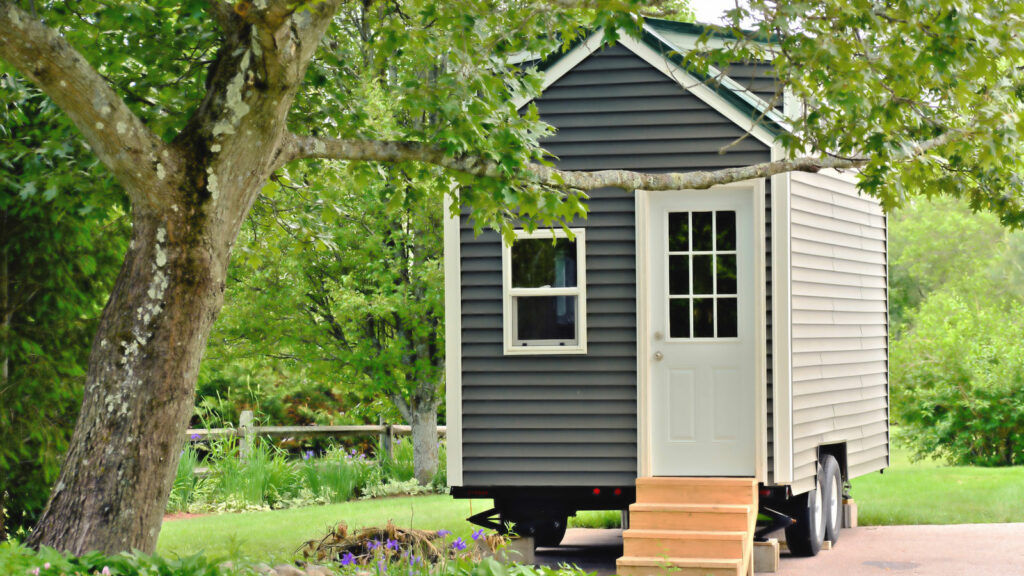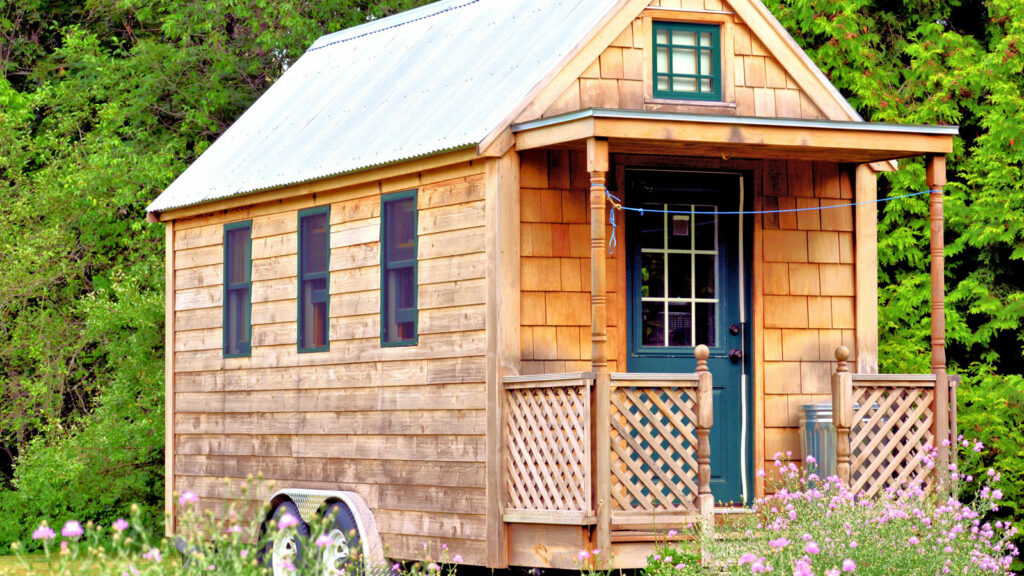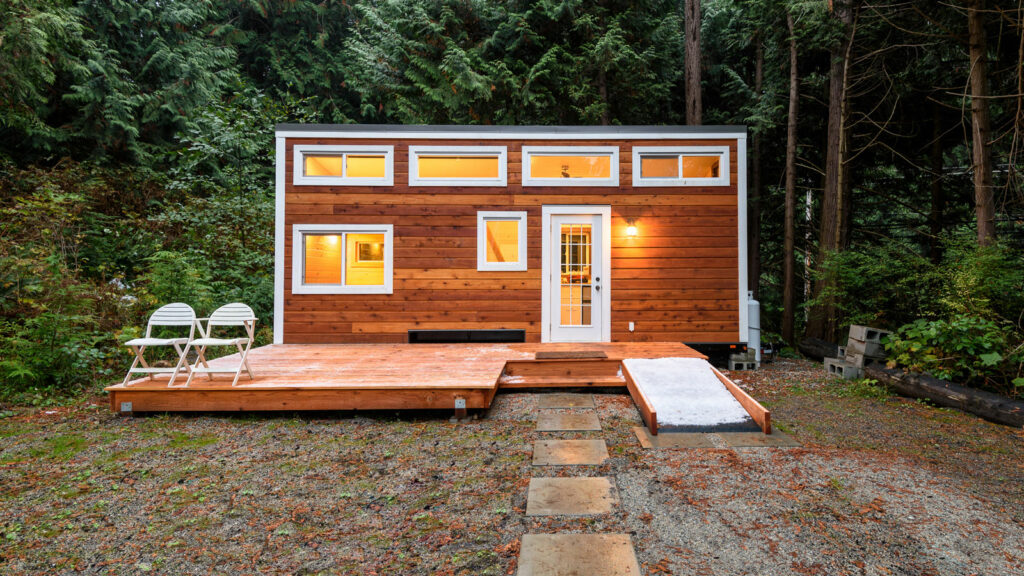Everything You Need to Know about Tiny Homes in Ontario
As the cost of housing rises, people worldwide are exploring the possibility of tiny homes. Several Ontario residents are already embracing the tiny home lifestyle and building highly functional, minimalistic homes that meet their needs.
Building and moving into a tiny home with less than 600 square feet of space can be tough. It is a lifestyle adjustment, but it can be a very rewarding experience. Before you start building the tiny home of your dreams and making the move, use this guide to learn as much as you can and get some of your questions answered.
Is it Legal to Own a Tiny Home in Ontario?
Tiny homes initially attracted new residents because of their limited regulations in Canada. With more individuals and families making the move, the tiny home industry became more regulated. While these regulations may vary slightly by the municipality, using a tiny house as a primary or secondary home is legal.

What are the Requirements?
In most areas in Ontario, you can build a tiny home on any land you own as long as it follows all municipal by-laws and the Ontario Building Code. Before beginning your project, you will also need to secure a proper building permit.
Keep in mind that for your tiny home to be considered a legal dwelling, it must have the following:
- Running water
- A dedicated sleeping area, bathroom, and cooking area
- A shower or bathtub
- Proper insulation
- Follow all local fire safety guidelines
- Staircases to access any additional floors
Depending on your municipality, your tiny home may also need to have a foundation. Some municipalities restrict homes with wheels to campground areas and mobile parks. Double check the Ontario tiny home building guide and the Ontario Building Code before submitting your plans for approval.
Where can I Legally Park or Place My Tiny Home?
Tiny homes can be placed on land you own or rent. Because running water is a requirement for a legal tiny home in Ontario, you will need to find land that already has access to water and sewage services. One common scenario is to build a tiny home in the backyard of an existing home or purchase a small, dedicated lot. Other tiny homeowners may need to explore mobile parks, camping grounds, and other dedicated communities.
A good rule of thumb is to consider where you can and cannot park an RV year-round. For example, RVs cannot typically be parked on undeveloped land without access to running water.
How Often Do I Need to Move My Tiny Home?
If you built your tiny home legally and followed all applicable building codes, you can live in your tiny home year-round. Tiny homes on wheels may be recognized as homes, but they often must follow the same regulations as RVs. That means they would need to be moved every 120 days unless they are in a dedicated RV park or campground covered by provincial tenancy laws.
If you placed your home in an abandoned lot, you wouldn’t qualify for squatters’ rights for 10 uninterrupted years of occupancy in Ontario. If the land is registered under the Land Titles Act, the land cannot be taken through adverse possession claims unless you began occupying the land at least 10 years before the conversion.
Some areas have no restrictions on where you place your tiny home. Ontario has several areas that have unorganized townships and land. These areas don’t have a local authority set up, but there may be building restrictions to preserve the environment. Some unorganized land is also home to off-grid tiny home communities. Just be sure to research the community and area well to ensure it is a good fit.

What are Some of the Most Common Examples of Locations to Put a Tiny Home?
Because of their smaller size, tiny homes can be placed in a wider range of places. Many tiny home designs, especially those around 100 square feet, are created with portability in mind. Some people choose to move their tiny homes every few months; others find a permanent placement. Here are some of the most common places to put a tiny home.
Most people building or purchasing tiny homes for their primary living space find available lots or land in a city or town they enjoy living in. While each city and town may have its own building and placement requirements, most will allow you to build your tiny home on any lot you own. While some people choose to purchase a small lot, others transform their existing backyard into a tiny home paradise.
Another option is to look for campgrounds or mobile parks that allow tiny homes. If your home has wheels and is being used as a primary dwelling, you may be restricted to these options, especially if you are looking for space near a large city. If you are seeking like-minded people, you may want to find a community that specifically caters to tiny homes. Tiny home communities can be found throughout Ontario and often offer community amenities that might not be available in mobile parks or campgrounds.
Farmland can also be an excellent option for people wanting rural surroundings. Many farmers have extra space and may allow you to rent land without a permit. This can be a great option for individuals and families who want a more secluded setting or who are interested in working in agriculture.
Another option is to look for Ontario municipalities that have cottage land with less restrictive community bylaws. Some of these areas encourage seasonal residents and visitors, making them easier to work with.
Can I Build a Tiny Home Myself?
Building a tiny home is a complex project, but many people have built their tiny homes from scratch. If you don’t have previous construction experience, you can expect to spend hours researching, creating a design that suits your needs and complies with local laws, sourcing building materials, and completing a lot of general labor.
When building a home yourself, you can create something truly unique. If you need help designing the layout of your tiny home or need step-by-step instructions, plenty of guides are available online. If a task becomes too difficult or you aren’t sure you can complete it safely, you can always ask a professional for help.
Remember that solo construction can be difficult and has a learning curve. Many people like the idea of building their new home from scratch but don’t have the time or patience to complete the project. There are several ready-made tiny houses available and several manufacturers that can help bring your unique vision to life.

Do I Need a Permit to Live in a Tiny House?
Most municipalities require you to obtain a building permit before you begin construction. Some cities and towns may require additional documentation before making your tiny home your primary dwelling. Check all local laws to ensure you have the correct permits before building and moving in.
Tiny homes are significantly increasing in popularity, and the rules and regulations may continue to change. Whether you build your new home from the ground up or hire a team of professionals, be sure to review the Ontario Building Code and local regulations to ensure you are building legally.
FAQ
Does Ontario allow tiny houses?
Is it cheaper to buy or build a tiny house?
How big can a tiny house be in Ontario?
Can I build a tiny house in my backyard in Ontario?
